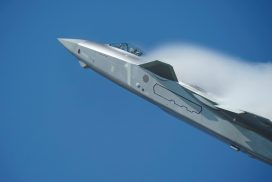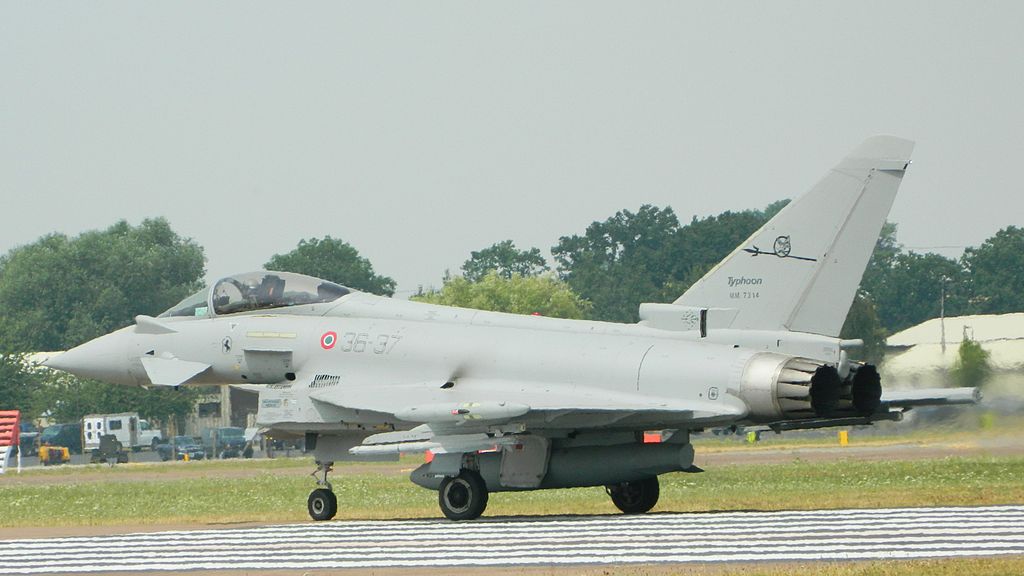Moscow’s respected business daily Kommersant reported that Russia’s arms-trading monopoly Rosoboronexport has begun to fulfill an arms deal it secretly signed with Syria this year to sell five MiG-31E jet fighters, considered among the best in the world, and an additional unspecified number of the newest MiG-29M/M2 fighter-bombers.br /The paper reported the total price to be about US$1 billion. MiG-31s were produced at the Sokol aviation factory in Nizhniy Novgorod from 1981-94 (some 500 planes overall). Since production has been terminated, Syria, according to Kommersant, will get the jets from the Russian Defense Ministry stockpile after a refurbishing at Sokol.br /Kommersant suggested that Iran is partially or even fully covering the purchase bill, and that the jets may partially or fully end up as part of the Islamic Republic of Iran Air Force. Commenting on the Kommersant report, Foreign Ministry spokesman Mikhail Kamiynin last week told reporters, “All Russian arms deals comply with international law and Russia’s obligations under international treaties and UN Security Council resolutions.”br /This vague statement was widely taken as indirect conformation of the Kommersant story, but it later turned out not to be the case. By last Tuesday evening, Rosoboronexport head Sergei Chemizov, speaking in Paris at Le Bourget Air Show, had denied the existence of any jet fighter deal with Syria.br /This is not the first time Kommersant has published a page 1 “scoop” on breaking arms-trade news that later turned out to be not fully accurate. Last month it reported that Libya and Russia were close to finalizing a $2.2 billion arms deal. Neither Moscow nor Tripoli confirmed the report.br /This month Kommersant reported that Venezuelan President Hugo Chavez might buy nine Russian submarines, reportedly worth $2 billion, when he visits Moscow in June to meet President Vladimir Putin. This deal seemed fishy from the start, since it clearly exceeded the present capacity of Russian shipbuilders to make new subs and the Venezuelan navy’s capacity to run so many new ships.br /Kommersant reported that Venezuela had chosen Russian subs over others offered by Germany and France, which also sounded odd, because Russian conventional attack subs, including the latest models, are outdated and significantly inferior to German and French ones. Venezuelan Defense Minister Raul Isaias Baduel promptly denied that his government was planning to buy submarines from Russia.br /Kommersant claims the MiG-29M/M2 is more or less the same jet Russia is peddling to India as the MiG-35. The MiG-35 is still only a flying prototype – not a real fighter – and the Russian Air Force does not have any such planes. If India chooses a European or US fighter instead, the MiG-35 as well as the MiG-29M/M2 may never enter serial production.br /The MiG-31, in turn, is a real fighting jet. Russia today has some 280 MiG-31s. Before delivering the aircraft to buyers, arms traders and producers first remove secret Russian military equipment. Then the jets are repainted and sold as “modernized” for high prices, creating sky-high profits that do not seem to ever reach state coffers.br /Since the collapse of the Soviet Union in 1991, Moscow has been trying to sell the MiG-31. The plane has been displayed at air shows, but no customers have come forward. The MiG-31 is a highly specialized jet – not a fighter per se, but an interceptor specifically designed to kill long-range US cruise missiles. The MiG-31 is a bulky two-seater that can carry up to eight air-to-air guided missiles with a range of up to 120 kilometers.br /The MiG-31 can fly supersonic near the Earth’s surface as well as high up. It is a purely defensive fighter, designed to be used over friendly territory to defend against massive air assaults. The MiG-31 has sophisticated and powerful radar that can track 24 different targets simultaneously and exchange information with other MiG-31s and ground control centers.br /Any country that is seriously preparing to meet the US military on the battlefield, as Iran seems to be, would want to have such a jet to meet an air assault complemented with hundreds or thousands of cruise missiles, as happened in 1999 in Yugoslavia and in 1991 and 2003 in Iraq. Syria could also want several such jets, if Washington were to decide to attack, say, terrorist-connected targets on its territory. The MiG-31 deal with Syria, as reported by Kommersant, seems more plausible than stories about, say, nine subs for Venezuela.br /Chemizov has denied the MiG-31 contract, but Kamiynin was deliberately noncommittal. Kommersant may have received confidential information about the possible deal and the leak could have been deliberate. The arms-trade stories Kommersant has been printing may be tests of Western (US) reactions, to see what would happen if imaginary arms contracts suddenly turned out to be real.br /These leaks also may be a signal to the West to understand what woe to expect if the Russo-US summit this coming weekend in Maine goes awry.
Menu
Copyright © 2007- 2024 • Defence Aviation • All Rights Reserved. Reproduction without explicit permission is prohibited.



